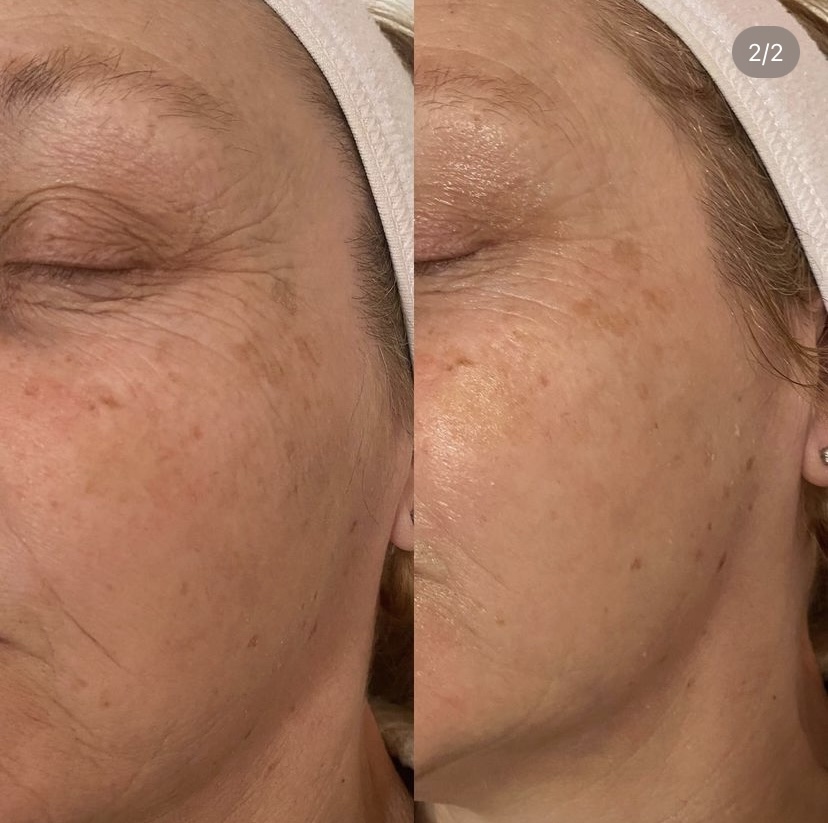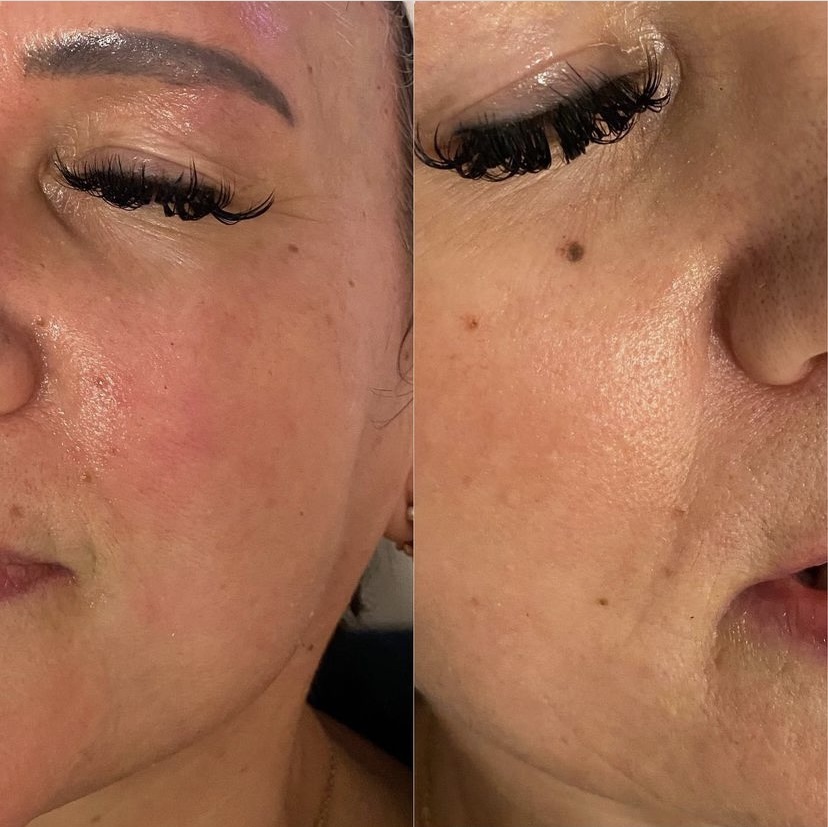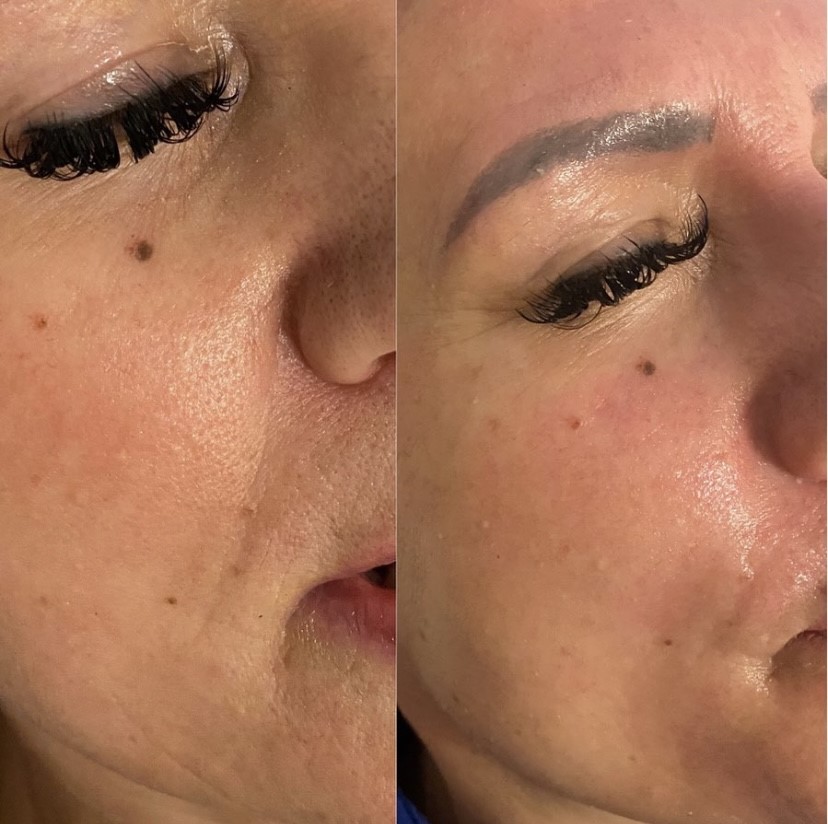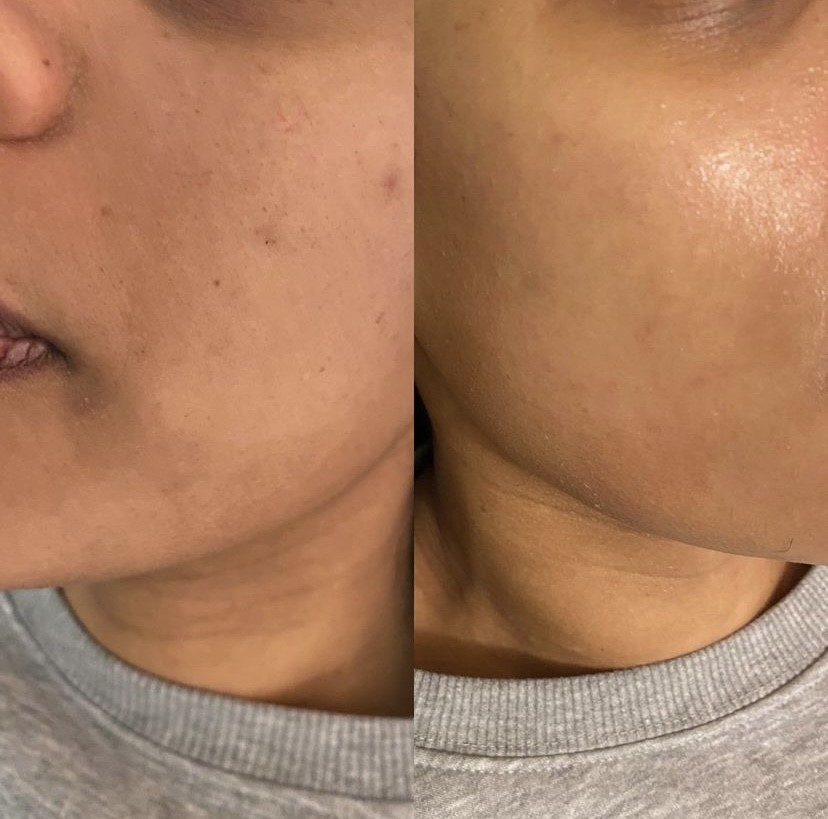How does it work?
A chemical peel is a solution applied to the face to remove dead skin cells and stimulate the growth of new cells. The skin healing process that takes place when applying the peel is triggered in the dermis layer of the skin. This process stimulates the production of collagen and elastin and increases cell turnover.
The aim is to improve the appearance of the skin, such as, reducing age spots/pigmentation, reduce fine lines and wrinkles and even out skin tone.
What results should I expect from a Skin Peel?
- Rejuvenated, brighter skin
- Dull skin revived
- Removal of dead skin cells
- Even skin texture and tone
- Reduced appearance of fine lines and wrinkles
- Smoother, softer skin
- Eliminated pigmentation and reduced effects of sun damage
- Reduction of inflammation and breakouts caused by acne
- Hydrated and nourished skin
- Stimulated collagen production for plump and youthful looking skin
Skin Peels used at SCLaser are 40% AHA medium-deep strength peels (except for the gentler enzyme treatment that can be used as a gentler peel). These peels are known as the “lunchtime peel” with minimum downtime and minimal shedding. You can expect exfoliation of the skin, removing a controlled amount of skin cells (including damaged skin cells) from the epidermis (superficial layer of the skin) and increased collagen production in the dermis layer of the skin.
All skin peels have different properties and because of this will provide different results. A patch test and consultation of your skin type and skin concern is required to provide you with the best treatment possible. The treatment peels SCLaser offer are:
Youthful Peel– Gylcolic Peel
Rejuvenating Peel– Lactic Peel
Pigmentation Peel– Mandelic Peel
Acne/Oily Skin Peel– Mandelic Peel or Enzyme Peel




Risks
A chemical peel can cause various side effects, including:
- Redness, scabbing and swelling- Normal healing from a chemical peel involves redness of the treated skin. After a medium or deep chemical peel, redness might last for a few months.
- Rarely, a chemical peel can cause scarring – typically on the lower part of the face. Antibiotics and steroid medications can be used to soften the appearance of these scars.
- Changes in skin color- A chemical peel can cause treated skin to become darker than normal (hyperpigmentation) or lighter than normal (hypopigmentation). Hyperpigmentation is more common after superficial peels, while hypopigmentation is more common after a deep peel. These problems are more common in people with brown or black skin and can sometimes be permanent.
- Infection- A chemical peel can lead to a bacterial, fungal or viral infection, such as a flare-up of the herpes virus — the virus that causes cold sores.
